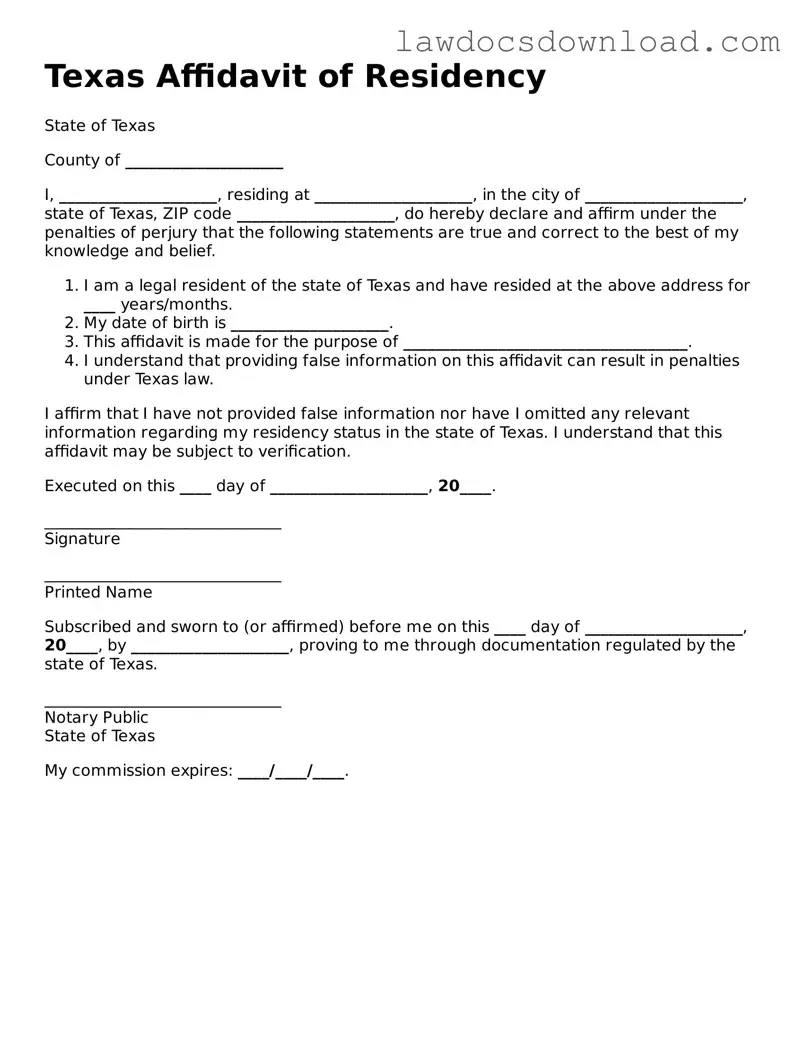The Texas Affidavit of Residency form shares similarities with the Proof of Address Letter. Both serve to verify the address of an individual, which can be necessary for registration purposes or when accessing certain services. The Proof of Address Letter, often written by a landlord or an employer, complements the Affidavit by providing a third-party confirmation of residency.
Comparable to the Texas Affidavit of Residency is the Voter Registration Form. This form requires individuals to affirm their current address to ensure they are registered in the correct electoral district. While the Voter Registration Form serves a more specific purpose, both documents require accurate disclosure of one's residence.
The School Enrollment Form is another document that necessitates a declaration of residency. Like the Affidavit, it confirms a child’s address to determine eligibility for local school attendance. The form often requires proof of address to verify the claims made, underlining the importance of truthful residency information.
Similar in function to the Texas Affidavit of Residency, the Driver’s License Application requires applicants to provide proof of current address. This ensures the license reflects an accurate place of residence, critical for state records and in cases of emergency or legal need.
The Homestead Exemption Application in Texas, aimed at homeowners seeking tax relief, necessitates a sworn statement of residency similar to the Affidavit. It confirms that the applicant’s home is their primary residence, offering benefits based on this status.
Utility Connection Requests for services such as electricity, water, or internet often require a form of residency verification much like the Texas Affidavit. These requests assure service providers that the applicant resides at the stated address, facilitating billing and service obligations.
A Passport Application also demands proof of residency, paralleling the Affidavit of Residency. Applicants must provide evidence of their address to verify eligibility and to ensure the passport contains correct personal details. This process underscores the need for documented residency proof in both national and international contexts.
The Bank Account Opening Form, like the Texas Affidavit, asks for confirmation of residence. Banks require this information for regulatory compliance, to combat fraud, and to establish account-related communications, highlighting the critical nature of verifying an individual's residence.
Immigration Forms that apply to visas or residency status changes often need a documented proof of address, akin to the affidavit. These forms use such information to determine jurisdiction, eligibility, or to comply with local laws, stressing the importance of accurately establishing one’s residency.
Lastly, the Jury Duty Summons is another critical document requiring proof of residence, similar to the Affidavit of Residency. Individuals must prove their residency within the jurisdiction calling for jury service, illustrating how various legal processes depend on the correct determination of an individual’s residence.
